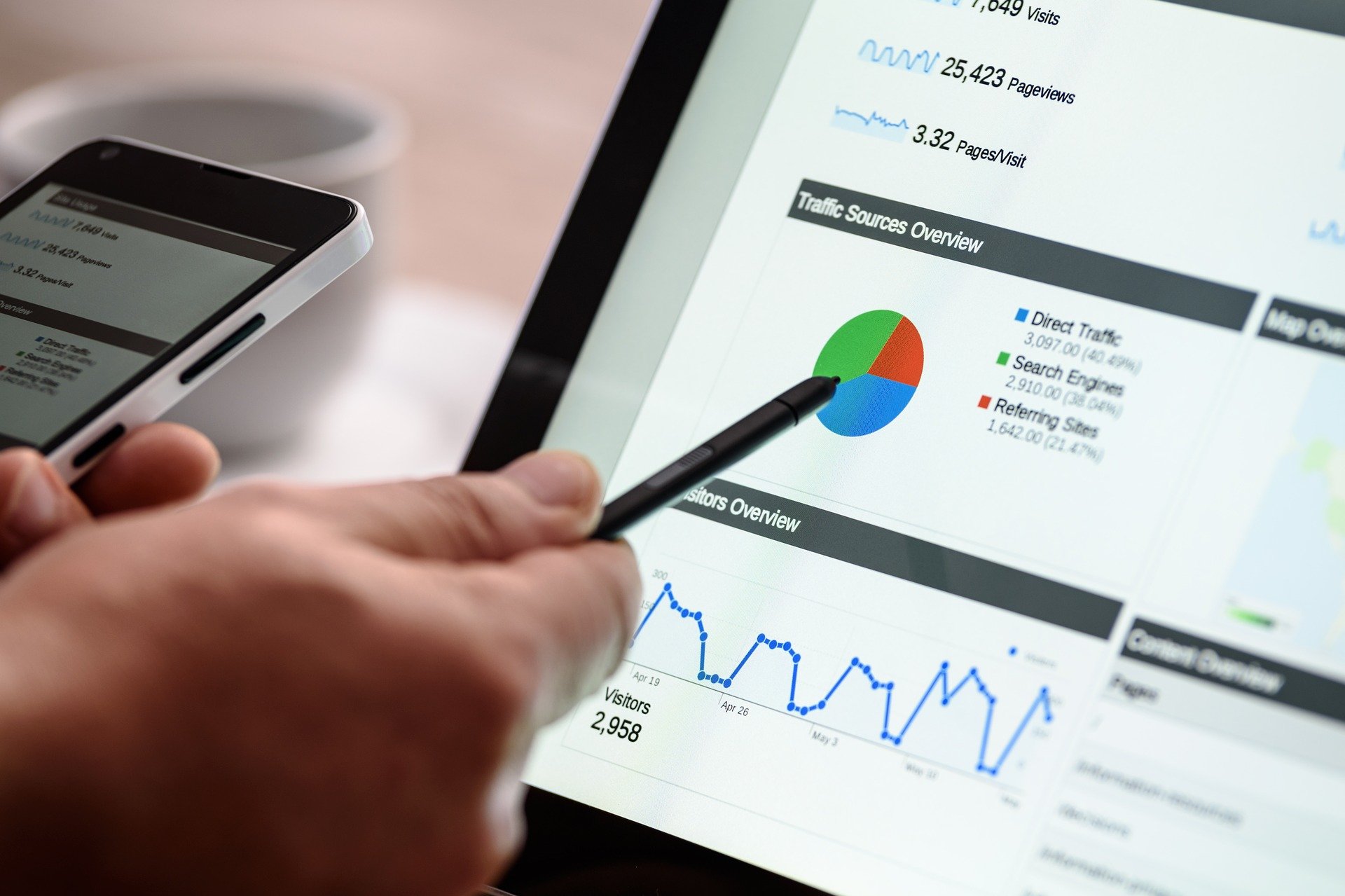Custom BI and Advanced SaaS Analytics: Why Do You Need it?
Business intelligence software is the most effective way to collect and analyze current data that can be used to maintain, optimize business processes and streamline business operations. SaaS business analytics tools provide the ability to predict business trends. Today, the leading companies in this field are Microsoft (Power BI), SAP and IBM. But there is always room for custom solutions and new products.
According to Statista research, the market size for BI and advanced analytics software is forecast to increase worldwide over the next few years from $15.2 billion in 2020 to more than $18 billion in 2025. The most popular apps are trying to respond to all customer's needs in a way to accomplish companies’ corporate goals.
In this article, we’ll try to understand how BI and SaaS analytics software can be helpful in resource management, customer engagement and trend prediction. We’ll also try to consider the question of the difference between custom and ready-made solutions to find the best decision for the particular business.

Why Do You Need SaaS Analytics?
SaaS data analytics is about tracking and analyzing all the company's business processes related to software development as a service. The essence of such analytics is to track metrics such as monthly recurring revenue (MRR), customer churn, value for the lifetime value (LTV), KPIs, user engagement, etc.
Based on collected data analysis, it’s easier to make intelligent business decisions and effectively achieve a high KPI. Proper data analysis systems handle large amounts of data and are flexible/scalable.
Is it possible to develop your business without SaaS analytics? Perhaps. However, some obvious advantages of such tools argue in their favor.
Reduce Costs, Including Maintenance
Each SaaS analytics tool helps you understand which steps really work and which don't. It allows you to properly allocate your budget reduce post MVP development costs and save money previously spent on useless processes.
It’s also worth noting that SaaS analytics helps track changes in real-time so that you can plan the next steps more carefully and efficiently. In other words, you get the ability to track and customize business processes individually and with no overpayment.
Target Audience Segmentation
Proper segmentation by MRR, business area, industries, etc., is an effective step to optimize the user experience. Obtained data helps to understand customers and their needs better, as well as to determine what future customers needs.
SaaS analytics is also an effective way to identify the most valuable and profitable customers and understand what makes them use your product. In the long run, this information remains indispensable for developers, designers, and marketers in the long run.
Predictions and Insights
Modern SaaS BI solutions allow you to use all the features of predictive analytics. This enables business owners to respond easily to any future changes, as they have clear forecasts, insights and know market trends in advance.
Supports Human Capital With AI and ML
Artificial intelligence and machine learning methods allow you to quickly analyze huge amounts of data and predict the behavior and needs of users based on results. This approach also helps automate many user interactions to allow staff to spend their time on things that require flexible human thinking.
Besides, you can stay close with your users and improve service delivery methods based on dynamic analysis.
Cope With the Churn
Specific SaaS analytics is an opportunity to identify the root causes of customer churn and thus stop it as soon as possible. The analysis results also help increase customer retention through detailed information about their needs and the automation of individual processes.

Key Features of BI System for SaaS
Business intelligence or BI is a term that combines technologies, methodologies and tools for collecting and analyzing company data. BI gives you access to business processes details, making them more efficient and manageable.
SaaS business intelligence or BI on-demand is a model of analytical data delivery that, in most cases, is implemented outside the company’s firewall at a hosted location. In this way, the corporation's employees have access to practical BI tools without installing specific equipment and having capacity on site.
This model involves the expansion of the BI-system in correlation with the company's growth, the needs for analysis, and market requirements without reference to equipment.
BI for SaaS has particular key features, so let’s talk about them.
Data Management
Any analysis system requires advanced data management and BI is no exception. The proper system always has enough tools for this purpose. The main ones are
- Direct management function. The BI platform must be able to control access to data, their use in different operating systems and disaster recovery.
- Data sorting/filtering function. Advanced filters speed up and narrow the search for needed information and help easily organize data sets. This necessary platform component simplifies the results of analytics.
- Metadata management function. BI systems should be able to manage metadata centrally (storing, exchanging, extracting, etc.). This way, users have access to metadata integration and metric control options (KPIs, sales, etc.).
- Data preparation function. The software for data analytics typically processes data that users can take from various sources to create analysis models. Therefore, it is vital that every platform makes correlations automatically and works with structured and unstructured data.
- Data integration function. BI system should allow data integration from various sources, such as CRM, shopping tracking software, spreadsheets, etc. This helps speed up and simplify data retrieval and further processing.
- Data transformation function. This option is required for easy use of analytical platforms. It allows you to convert information into a specific format and transfer it to the target location for analysis. This is especially important for companies with many different data sources that need to be processed quickly and combined for reporting.
Data management is a crucial component of a BI system, especially in creating the SaaS product strategy, so paying special attention to its details is essential.
Analytical Dashboards and Interactive Data Visualization
This feature helps to improve the final stage of reporting. Information dashboards can be practical components of various charts to simplify the presentation of information, results, and faster understanding.
Data visualization can include tools for transforming analyzed data and analysis results into bar/line/segment or multilayered charts, users roadmaps, geospatial reports, flow maps, etc. A wide range of graphical data representation tools is needed to interpret complex numerical data, find hidden patterns and correlations, and present performance and development indicators.
Reporting and Querying
Reports and queries allow you to control the sorting and generation of complex data. They are generated for fast data output and quick emergency decisions or perform data sorting functions using specific custom indicators.
Modern reporting in data analyzing software allows you to display complex data even without coding skills, so people outside the technical departments can use this feature. It’s required to organize the company's data into information summaries and efficiently track the functioning of its individual areas. Therefore, the system needs various tools to create, format, configure and present reports correctly.
Accessibility on Multiple Devices
Analytical systems, especially in the SaaS development services area, should be available on smartphones, tablets, etc. You can use your mobile features to present results, collect and share data, etc.

Data Analytics Software Development Process
The SaaS analytics software development process largely depends on the company's size, its goals and individual management tactics. However, several primary stages are the same for almost everyone.
Phase 1. Preparation and Definition of Goals
Before you start developing software, it is critical to understand your company's purposes and goals. The mandatory functions, areas of use, etc., are determined at this stage. At the goal-setting stage, you should find the middle ground between management and development needs. And don’t forget about competitors' analysis.
Phase 2. What Data Do You Need?
This step involves selecting data for processing, measurement and use. At this stage, the measurement and selection parameters themselves are also determined.
Phase 3. Data Collection and Preparing
At this stage, it’s necessary to prepare and collect a bunch of data from existing databases and new ones. After that, the data scientists organize the gathered data for future use. They create operation logs, naming and filtering systems, etc.
This step also involves sorting the collected data and selecting the required information. The filter system created at this stage helps eliminate unnecessary data; it can become a software feature in the future. You can also use tools such as Stata or Visio to analyze and select data at this stage.
Phase 4. Algorithms
In the world of Big Data and the development of analytical software, writing algorithms is a big part of product success. In a sense, they affect the application as much as the code, if not more. Therefore, at this stage, it’s essential to write algorithms that would properly group the data, conduct their classification correctly, easily build templates, and etc.
In other words, this step is about artificial intelligence and machine learning. This is how you can create an effective data analysis system that is flexible and capable of continuous improvement.
Phase 5. Testing
Before launch, any product has to be tested, and data analytics software is no exception. At this phase, it is vital to check the product for errors and bugs, correct any possible shortcomings, and ensure that each user gets the desired experience.In the process, engineers analyze data sets of different sizes over different time periods to ensure the correct operation of the system. Only after a complete test software is ready for launch.

Data Analytics Software Development Cost
The cost of SaaS analytics software development depends on several common factors:
- ready-made or custom solution?
- set of mandatory functions;
- the number of users;
- level of customization.
In the case of ready-made solutions, the cost is also affected by the type of license (subscription or one-time purchase), access method (local or cloud), etc. Such software costs $500-1000 per subscription (for one user).
As for custom options, the price may also be affected by the number of working hours in development and the specialists involved. Also, the customer pays for support and maintenance. The average total cost of such software can be from $30,000. Everyone has access to the features; no need to renew your subscription. In terms of a year, a custom solution is cheaper, especially if you find a solid dedicated team from Eastern Europe.
How Ardas Uses Custom BI in Own Products
Each of our projects begins with a professional analysis, which allows us to identify major competitors, find advantages over them, as well as identify trends in product development. Regardless of the needs, the first step always includes professional research and in-depth analysis conducted by business analysts, marketers, designers, etc.
So, custom BI is our primary tool in working with any product. For example, we’ve used it to develop and maintain a project management platform. It helped us to estimate the proper budget and scope based on the client's needs. BI tools also were useful in building the interactive trading education portal, as we could choose the best tech stack and set a chain of priorities to save money and time.
We’ve used custom BI while developing CCPA, LGPD, GDPR compliance management and automation tool to create detailed specifications, plan a perfect team and optimize workflow as the amount of work was huge. Custom BI helps us develop high-quality modern software in retail and commerce, healthcare, real estate, fintech, education, security, business process automation and many other fields. You can always find the full list in our portfolio.

Custom BI vs. Ready-Made Solutions
Each company has specific needs and goals, so the difference between ready-made and custom solutions dramatically affects software's effectiveness. Let's talk about the pros and cons of both options.
Ready-Made BI Software
Ready-made BI software has certain advantages. It’s quite easy to install and use, and you don’t have any troubles with settings and maintenance. If you are looking for a solution that doesn’t require additional features and operations with individual requirements, you can choose this option.
Another advantage is the cost. Serial software has a fairly low initial cost, so you can safely use it in the early stages until there is a need for a more custom solution for business.
Cons
However, there are some hidden rocks worth paying attention to. Ready-made solutions may not meet all your business's needs, which will affect the efficiency of analytics results.
You may also face some compatibility issues when your company's software conflicts with analytics software. You’ll have to spend a lot of time and effort setting up and communicating with providers in such cases. And all this doesn’t guarantee success in the future.
Another important detail is the cost in perspective. Despite the friendly price of the initial package, connecting additional features or updating the subscription can be much more expensive.
Custom BI Software
As the name implies, embedded BI for SaaS is explicitly created to solve specific business problems and achieve specific goals. It offers a solution to every unique problem in certain circumstances, which ready-made software cannot provide.
Another critical advantage is flexibility and modifiability. Custom software can be easily scaled, expanded, and modified, so you don’t have to buy a new product for many years.
These two advantages culminate in the third one, which is competitiveness. Custom BI software allows you to make specific predictions and receive unique insights tailored specifically to your business. Ready-made solutions, unfortunately, are not able to predict in such detail.
Cons
There are two hidden rocks in this case. First of all, you need more money to create own BI solution for SaaS. Of course, in the long run, the soft will save you money and time, but at the same time, you have to find a certain amount for the first expenses.
The second “rock” is the need for extensive expertise. It’s important to find people who have experience creating custom BI software and can develop and maintain a truly quality product for your needs.

Wrapping Up
Business analyst consultancy is a very promising and incredibly important area of company development and improvement. Advanced analytics software and its tools, such as data mining or predictive analytics, are an effective way to gain truly valuable business insights, save money and support human resources. In a world of fierce competition, custom SaaS BI platforms give you a huge advantage, especially when it comes to areas that are transforming very quickly.
Key features of BI systems for SaaS are data management, dashboards and data visualization, advanced reporting and querying, etc. Custom solutions can include very specific functions transformed for certain company needs.
The business intelligence and analytics software market is projected to reach approximately $16.5 billion by the end of 2022. That is why it’s important to pay special attention to such platforms and determine the best option for your business.
We use advanced analytics and BI tools all the time, so we have extensive experience in this field. If you have any questions, we will be pleased to answer them and provide you with professional consultation. Just contact us in any convenient way.
